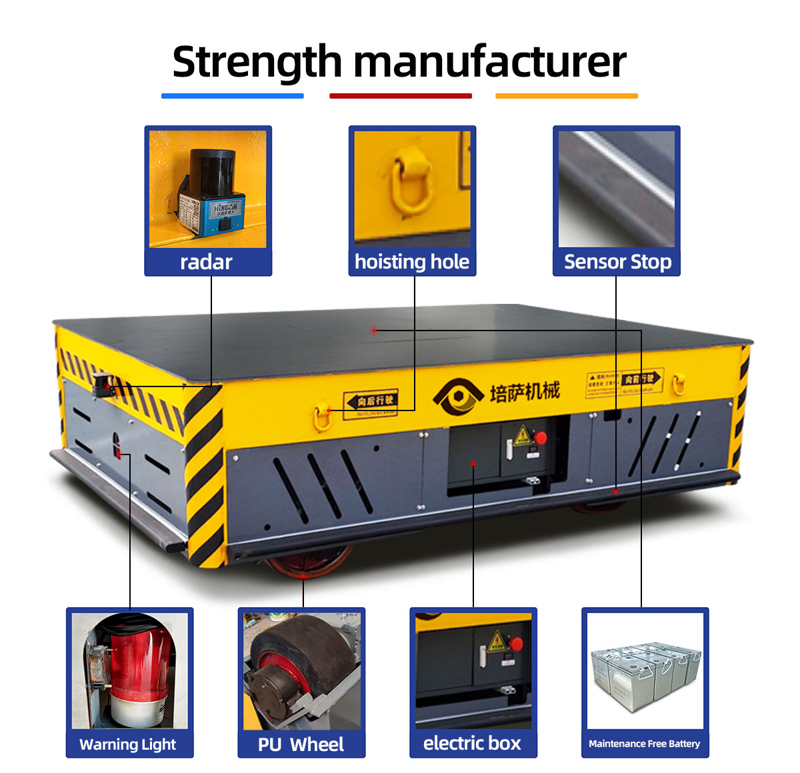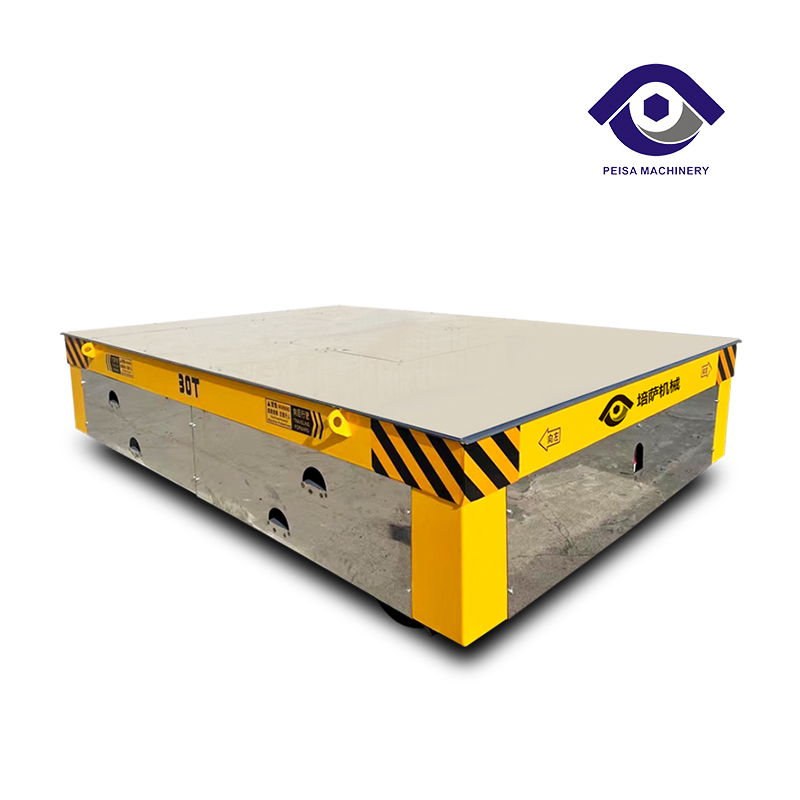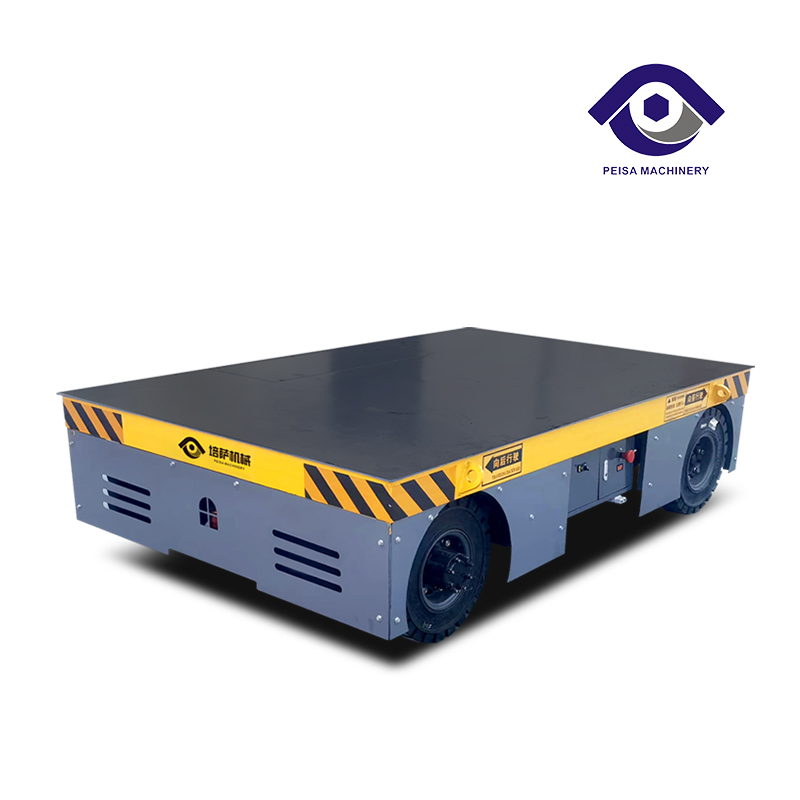The Battery Transfer Cart is a transfer vehicle powered by batteries, eliminating the need for an external power supply. It is primarily used for transporting goods in industrial environments such as factories, warehouses, and workshops.

Typically, this transfer cart is equipped with one or more battery packs that provide power to the motors and other electrical systems on the vehicle. These power the wheels, enabling the cart to move on a plane—forward, backward, turning left and right, as well as performing 360-degree turns. Some models also offer horizontal and diagonal movement, along with emergency braking and other advanced features.
The design of the Battery Transfer Cart allows it to operate independently of an external power supply system. This means it is not limited by fixed power lines and can easily navigate between different work areas. For example, it can transport materials between various production lines in a factory or between different storage areas in a warehouse.
Structurally, the cart typically includes:
A body for carrying goods.
A drive system, which consists of a motor and transmission device that converts electrical energy from the battery into mechanical energy to propel the cart.
A battery pack and charging system, ensuring the vehicle remains operational.
A control system, which allows operators to control the cart’s start and stop functions, speed, and steering (if available), ensuring efficient and precise transportation of goods.


A Trackless Transfer ...

Electric transfer ca ...

Battery Powered Tran ...

1. DefinitionThe Hea ...